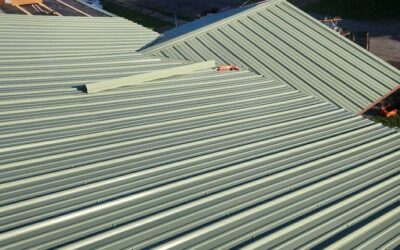Ice and Water Shield vs. Felt: What You Need to Know for Your Roofing Project with S&K Construction and Remodeling LLC
When it comes to roofing materials, especially in areas with harsh weather conditions like Northeast Ohio, it’s important to make informed decisions about the components that will best protect your home. One such decision is choosing between ice and water shield and roofing felt. Both are essential components of a roofing system, but they serve different purposes and offer varying levels of protection. In this post, we’ll dive into the differences between ice and water shield and felt, their advantages and disadvantages, and how to decide which is best for your roof.
At S&K Construction and Remodeling LLC, we specialize in high-quality roofing and home remodeling services throughout Cleveland, Medina, Lakewood, Chagrin Falls, Youngstown, and other cities in Northeast Ohio. Whether you’re a homeowner replacing your roof or planning a new build, we are here to guide you through the process and help you make the best decision for your property.
What is Roofing Felt?
Roofing felt, often referred to as tar paper, is a traditional underlayment material used in roofing systems. It is typically made of a fiberglass mat or paper that is coated with asphalt, making it waterproof. Roofing felt serves as a protective barrier between the roof deck (the wood sheathing) and the shingles. Its primary function is to provide a secondary layer of waterproofing to prevent water from seeping into the house.
Felt has been a staple in roofing for decades and continues to be widely used due to its affordability and ease of installation. It comes in rolls, making it relatively simple to lay out across the roof deck. Felt is also relatively lightweight, which makes it a good choice for DIY roofing projects. However, its level of water resistance can vary depending on the type of felt used.
What is Ice and Water Shield?
Ice and water shield, also known as ice dam protection membrane, is a specialized self-adhesive underlayment designed to protect roofs from ice dams and water infiltration. It is typically applied along the eaves, valleys, and other vulnerable areas of the roof where water is most likely to collect and cause damage.
Ice and water shield is made of a rubberized asphalt material that adheres directly to the roof deck. It is highly effective in preventing water from entering your home, even in the presence of ice dams, which are common in colder climates. The adhesive backing ensures that the membrane forms a tight seal with the roof deck, preventing water from getting underneath and causing leaks. Unlike traditional felt, ice and water shield provides a high level of protection against both rain and snow melt.
Ice and Water Shield vs. Felt: Key Differences
Now that we understand what each of these materials does, let’s explore the key differences between ice and water shield and felt. While both materials are used to protect your roof and home, they each offer unique advantages and drawbacks. Let’s take a look at some of the most important distinctions.
1. Water Resistance and Protection
One of the most significant differences between ice and water shield and felt is their water resistance.
- Felt: Roofing felt is water-resistant but not waterproof. It provides a basic layer of protection against rain and moisture, but it can still allow some water to seep through, especially in heavy downpours or prolonged wet conditions. While it can be effective for preventing water from reaching the roof deck in mild weather conditions, it’s not designed to withstand the kind of extreme moisture buildup that may occur in areas with frequent snow and ice.
- Ice and Water Shield: Ice and water shield, on the other hand, offers superior protection against water infiltration. It’s fully waterproof and designed to prevent water from getting under the roofing material, even in the presence of ice dams or heavy snow melt. The adhesive backing creates a tight bond with the roof deck, ensuring that there are no gaps or areas where water can get through. This makes ice and water shield ideal for regions that experience freezing temperatures and ice buildup.
2. Installation and Ease of Use
Another significant difference between these two materials is the ease of installation.
- Felt: Felt is relatively easy to install and is often used in traditional roofing installations. It is sold in rolls, which makes it easy to roll out across the roof deck. Installing felt requires only basic roofing knowledge, making it a good choice for DIY projects or cost-effective roofing solutions. However, felt installation does require some skill to ensure proper overlapping and sealing to avoid gaps.
- Ice and Water Shield: Installing ice and water shield is a bit more complex than felt. The material is self-adhesive, which means it must be carefully applied to the roof deck in a way that ensures the membrane sticks properly. It’s usually applied in strips along the eaves, valleys, and other vulnerable areas, and extra care must be taken to prevent wrinkles or air bubbles during installation. While it’s a more involved process, the added protection ice and water shield provides makes it worth the extra effort, especially for homes in areas with harsh weather conditions.
3. Durability and Longevity
When considering the lifespan and durability of roofing materials, ice and water shield typically outperforms felt.
- Felt: Roofing felt can be vulnerable to wear and tear over time, especially if exposed to the elements. The material may deteriorate when exposed to prolonged moisture, UV rays, or extreme temperatures. While it’s effective in the short term, felt may need to be replaced sooner than ice and water shield, particularly in areas that experience heavy rainfall or snow.
- Ice and Water Shield: Ice and water shield is designed for durability and long-term protection. Its rubberized asphalt composition allows it to resist damage from UV rays, moisture, and extreme temperatures. This makes it a more reliable choice for homes in climates with freezing winters or high levels of precipitation. The self-adhesive backing also helps to maintain its integrity, ensuring a tight seal for years to come.
4. Cost
Cost is always a significant factor when deciding on roofing materials, and there’s a noticeable price difference between felt and ice and water shield.
- Felt: Roofing felt is typically more affordable than ice and water shield. If you’re looking for a budget-friendly option that provides basic water resistance, felt is a good choice. However, if you live in an area with harsh winter conditions or have a roof prone to ice dams, the savings may not justify the potential damage caused by inadequate protection.
- Ice and Water Shield: Ice and water shield is more expensive than traditional felt. However, the added protection it provides can be worth the extra cost, particularly if you live in a region with significant snow and ice buildup. The added protection against water infiltration, ice dams, and moisture damage can help prevent costly repairs in the future.
5. Areas of Application
Not all roofs require ice and water shield, and it’s important to consider the specific areas of your roof that need the most protection.
- Felt: Felt is typically used as an underlayment for the entire roof. It covers the entire deck and provides basic protection against rain and moisture. While it’s effective for general use, it’s not designed for areas where water is most likely to accumulate, such as the eaves and valleys.
- Ice and Water Shield: Ice and water shield is specifically designed for areas of the roof that are most vulnerable to water damage, such as the eaves, valleys, and areas with low slopes. In regions with severe winters, ice and water shield is often applied to the entire roof deck for added protection, but it’s most effective when used in combination with other roofing materials.
Which is Right for Your Roof: Ice and Water Shield or Felt?
Choosing between ice and water shield and felt depends on several factors, including your location, the type of roof you have, and your budget. Here are some things to consider when deciding which material is best for your roofing project:
- Climate: If you live in a region with harsh winters, frequent ice dams, or heavy snow, ice and water shield is the better choice. It provides superior protection against ice dams and water infiltration, which can lead to costly water damage if left unchecked. In areas with milder weather, felt may be sufficient for basic water resistance.
- Roof Design: For roofs with low slopes or areas where water tends to accumulate (such as valleys or eaves), ice and water shield is the better option. Felt is generally used for larger, high-slope roofs but may not provide adequate protection in areas prone to water buildup.
- Budget: If you’re on a tight budget and need a basic underlayment, felt is a more affordable option. However, if you want long-term protection and are willing to invest in your roof’s longevity, ice and water shield is a more durable solution.
Why Choose S&K Construction and Remodeling LLC for Your Roofing Project?
At S&K Construction and Remodeling LLC, we specialize in roofing services across Northeast Ohio, including Cleveland, Lakewood, Medina, Chagrin Falls, and Youngstown. Our experienced team of professionals can help you decide whether ice and water shield or roofing felt is the best option for your home’s needs.
We provide expert roof installation, roof repairs, and roof replacements that ensure your roof performs at its best for years to come. Whether you choose ice and water shield or felt, we’ll ensure that your roof is protected with the best materials available.
Contact us today for a consultation and let us help you keep your home safe, dry, and secure.
 (440) 307-2060
(440) 307-2060

